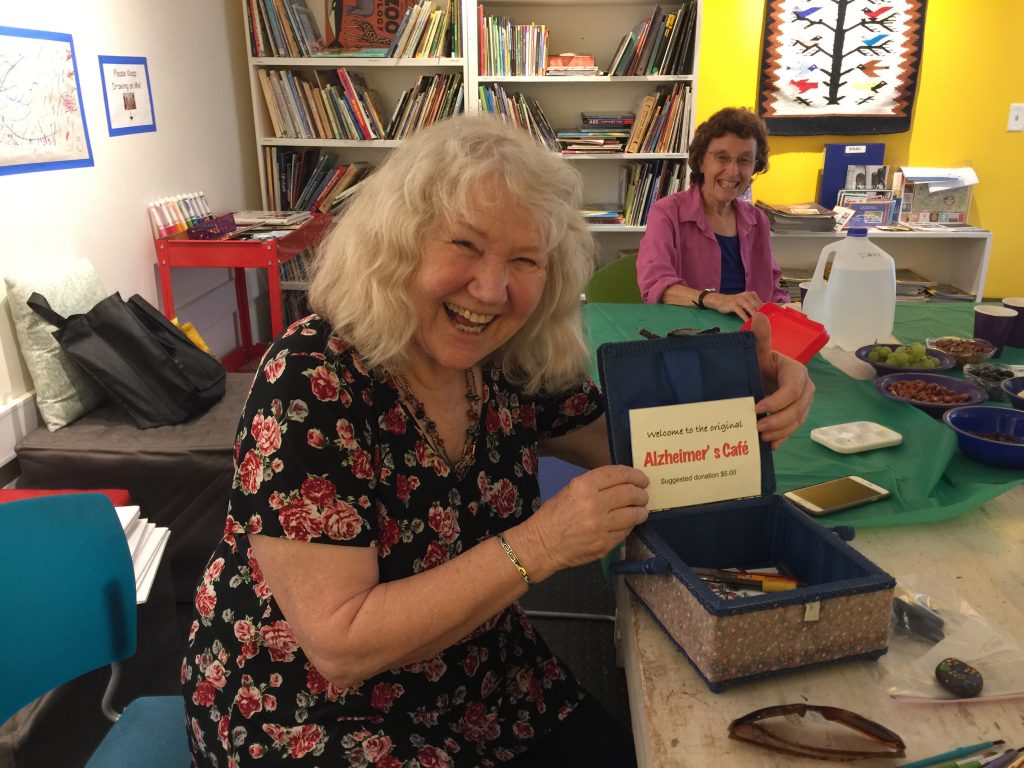Posts Tagged ‘Alzheimer’s Cafe’
Dementia Friendly Cafes: Inviting Creativity and Connection
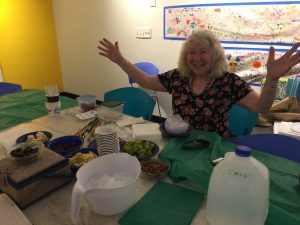 More than 10 years ago, Jytte Lokvig, PhD, was scanning the internet for additional information about dementia. On one of her Google searches she saw the words “Alzheimer’s Cafe” posted by Dr. Bere Miesen, who founded the first Alzheimer’s cafe in Leiden, the Netherlands in 1997. That phrase electrified her. She leapt out of her chair, much to the dismay of her cat, who was cozily sleeping across her feet, and declared, “I am going to make that happen in the U.S.!” She’d been working with people who were living with dementia in community settings for some years, orchestrating art, music, craft and other meaningful projects. But she felt something was missing. That something, she realized, was engagement in the community.
More than 10 years ago, Jytte Lokvig, PhD, was scanning the internet for additional information about dementia. On one of her Google searches she saw the words “Alzheimer’s Cafe” posted by Dr. Bere Miesen, who founded the first Alzheimer’s cafe in Leiden, the Netherlands in 1997. That phrase electrified her. She leapt out of her chair, much to the dismay of her cat, who was cozily sleeping across her feet, and declared, “I am going to make that happen in the U.S.!” She’d been working with people who were living with dementia in community settings for some years, orchestrating art, music, craft and other meaningful projects. But she felt something was missing. That something, she realized, was engagement in the community.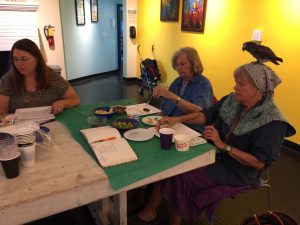 From that inspiration, Jytte created the original U.S. Alzheimer’s Cafe in Santa Fe, NM in 2008. Ten years later, there are more than 300 cafes in the US that invite creativity and connection through dementia friendly cafes.
From that inspiration, Jytte created the original U.S. Alzheimer’s Cafe in Santa Fe, NM in 2008. Ten years later, there are more than 300 cafes in the US that invite creativity and connection through dementia friendly cafes. 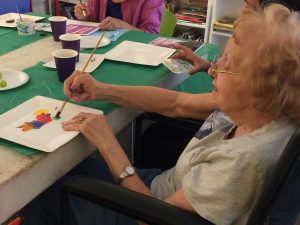 “Would you like a round plate of a square one?” she asked.
“Would you like a round plate of a square one?” she asked.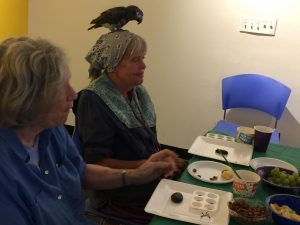
- Arrange a few snacks.
- Invite a guest or two, if you wish. This is an intergenerational project.
- Put a brightly colored plastic covering on the table.
- Squeeze some acrylic paint into a palette. Or use tempura or water colors.
- Offer a choice between two brushes.
- Offer a choice between two canvases: a cardboard paper plate, a river rock, paper, or other.
- Relax and let the painting unfold.
- If your loved ones need a little help, you can paint together. Or you can rest their hand on yours, while you paint to get them used to the movement of the brush.
- Appreciate the art by commenting on the color, the design, the shapes. Don’t ask them to identify the art: enjoy it as it is.
- Weave conversation into your time together.
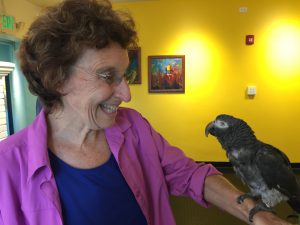
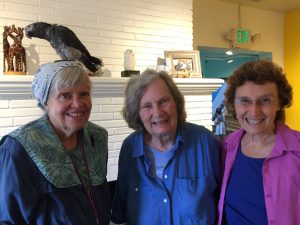
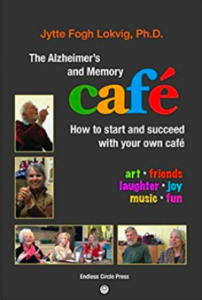
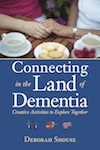
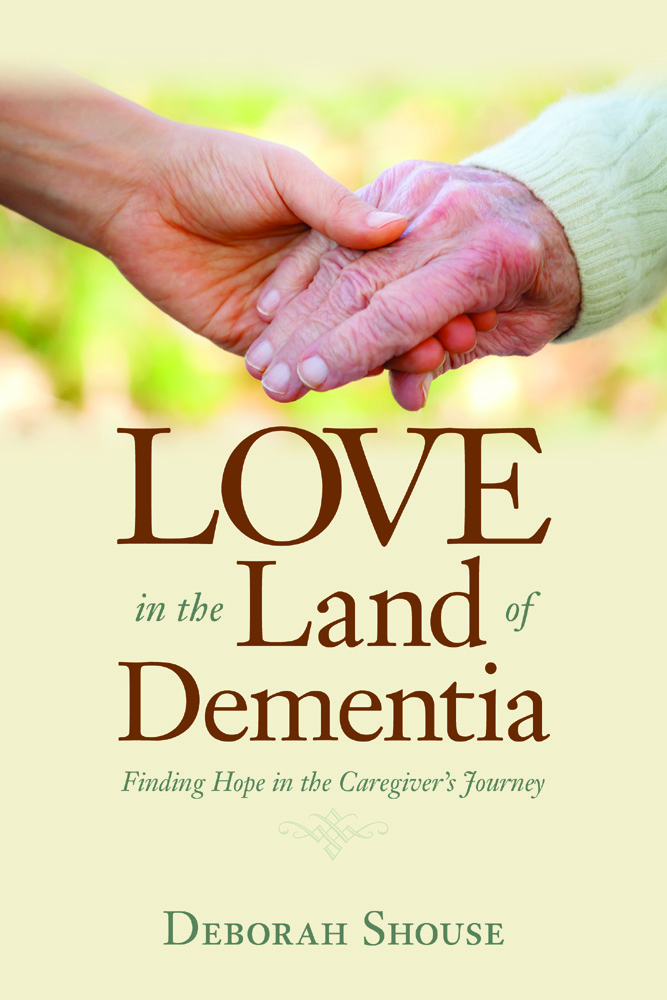
Dementia Café: Connecting through Donuts and Baseball
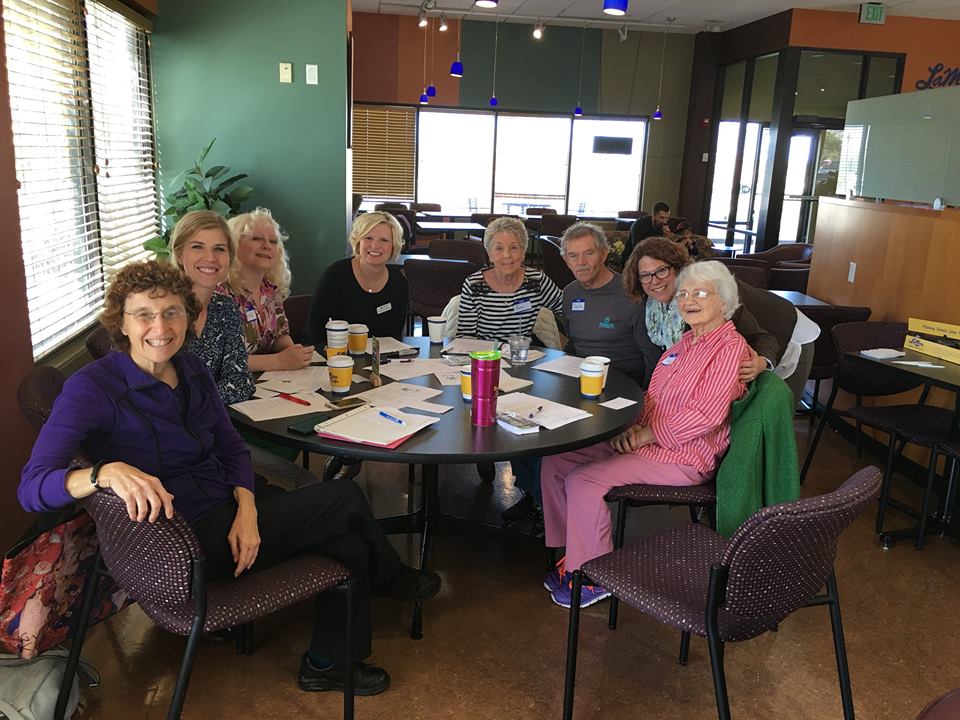
I’ve always enjoyed gatherings of creative people, so I was excited when I learned that Mandy Shoemaker was orchestrating a Dementia Café in our area. The premise is simple and fun: a group of people living with dementia, their care partners, and friends get together in a public space for a facilitated time of conversation, sharing, and creativity.
Mandy’s café took place in Lamar’s, a locally esteemed donut shop with a quiet atmosphere and a spacious seating area. Eight of us gathered around a table and Mandy opened the conversation by showing us a black and white photo of a baseball player laying on a field, next to a fence, apparently knocked out.
“Babe Ruth,” she told us. “He was running backwards to catch a ball and crashed into the barrier.”
We all nodded in sympathy, then began sharing baseball stories. Charlie had played in his youth and he and his wife Barb were ardent Royals fans. Courtney had played softball in high school. Fran, who grew up in the 1930’s in rural Mississippi, never had a chance to play sports but she liked hearing about the game.
“Did you ever listen to baseball on the radio?” Mandy asked her.
“In those days, not everyone had everything,” Fran said. “I don’t think we even had a radio.”
Barb remembered being on her grandparent’s farm, huddled around the radio, listening to the Yankee’s games.
“Have you ever heard the poem Casey at the Bat?” Mandy asked.
“I memorized it at school,” Charlie said.
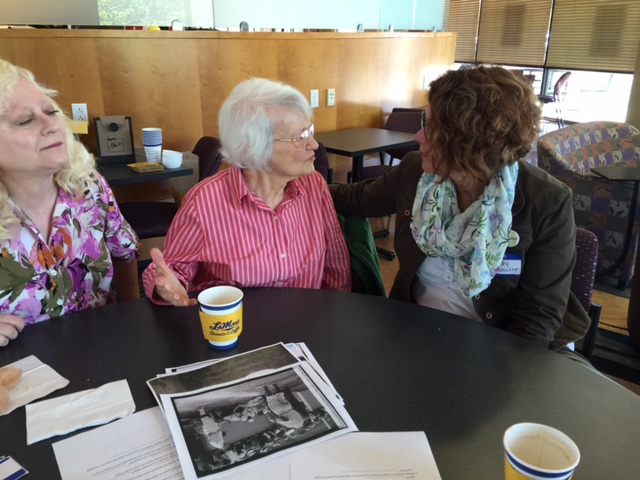 We took turns reading the dramatic poem, discussing such vivid terms as “when the dust had lifted” and “Casey lightly doffed his hat,” and one ball player was a “lulu” while another was “a cake.” The tension built and we chanted the last verse together. (Seek out this poem if you want to know what happened in Mudville that day: www.baseball-almanac.com/poetry/po_case.shtml )
We took turns reading the dramatic poem, discussing such vivid terms as “when the dust had lifted” and “Casey lightly doffed his hat,” and one ball player was a “lulu” while another was “a cake.” The tension built and we chanted the last verse together. (Seek out this poem if you want to know what happened in Mudville that day: www.baseball-almanac.com/poetry/po_case.shtml )
We then created a group poem, each contributing an answer to “Baseball is…”
I left the café feeling exhilarated and connected. Baseball was a catalyst for a great conversation that included life in the 1930s, family origins, Memphis, Elvis, baseball cards, Abbott and Costello, poetry, women and sports, fathers, hard work, radio programs, and more.
“It is our goal to create a more dementia-friendly community,” Mandy says. “Part of that is creating safe places for people with dementia to come and be a part of a group, with no expectations. The café invites people to just get out, be creative, and have fun.”
The KC Memory Café will meet on the second Tuesday of each month. To keep up to date, follow our facebook page at www.facebook.com/KCMemoryCafe
Create Your Own Cafe
You can also create your own café for two or more. Here are a few tips:
Select a public meeting place that serves refreshments and is reasonably quiet.
Let go of expectations and create a supportive atmosphere. You are here to express yourselves and connect.
Pick a broad topic that you are both interested in. Examples include seasons, sports, nature, games.
Start with a visual stimulation, such as a photo. Ask open-ended questions that invite imagination, such as “What do you see in this picture?” or “What do you think is going on?”
Allow the conversation to flow. The topic is a mere catalyst for ideas and communication.
Print out a familiar poem to read together. Enjoy the drama of reading aloud and invite comments on the poem.
For more about starting a café, visit
http://www.alzheimerscafe.com/public.html.alzheimersatoz.com/Welcome.html
Deborah Shouse is the author of Love in the Land of Dementia: Finding Hope in the Caregiver’s Journey.
COMING SOON: CONNECTING IN THE LAND OF DEMENTIA: CREATIVE ACTIVITIES TO EXPLORE TOGETHER
